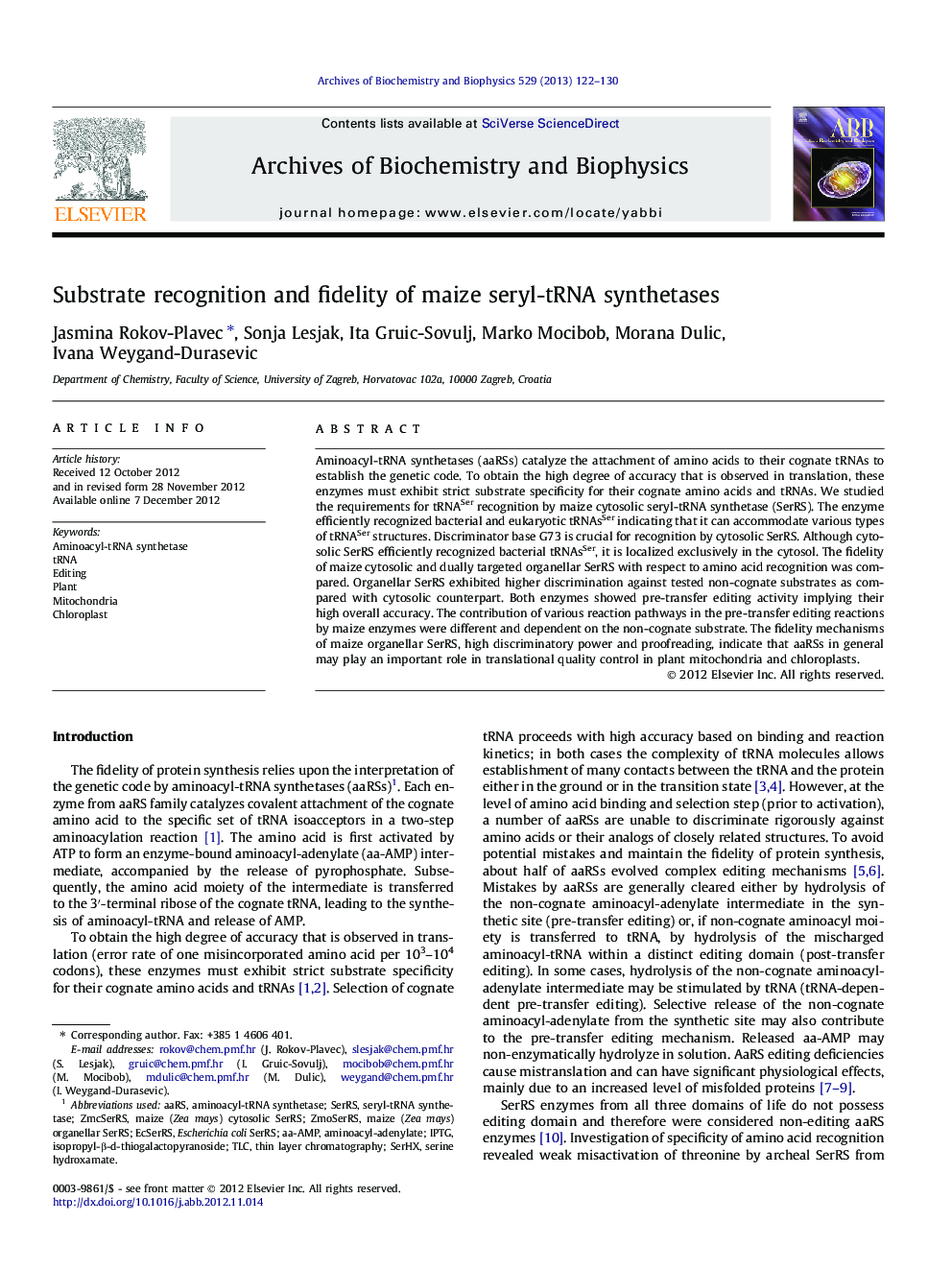| Article ID | Journal | Published Year | Pages | File Type |
|---|---|---|---|---|
| 1925429 | Archives of Biochemistry and Biophysics | 2013 | 9 Pages |
Aminoacyl-tRNA synthetases (aaRSs) catalyze the attachment of amino acids to their cognate tRNAs to establish the genetic code. To obtain the high degree of accuracy that is observed in translation, these enzymes must exhibit strict substrate specificity for their cognate amino acids and tRNAs. We studied the requirements for tRNASer recognition by maize cytosolic seryl-tRNA synthetase (SerRS). The enzyme efficiently recognized bacterial and eukaryotic tRNAsSer indicating that it can accommodate various types of tRNASer structures. Discriminator base G73 is crucial for recognition by cytosolic SerRS. Although cytosolic SerRS efficiently recognized bacterial tRNAsSer, it is localized exclusively in the cytosol. The fidelity of maize cytosolic and dually targeted organellar SerRS with respect to amino acid recognition was compared. Organellar SerRS exhibited higher discrimination against tested non-cognate substrates as compared with cytosolic counterpart. Both enzymes showed pre-transfer editing activity implying their high overall accuracy. The contribution of various reaction pathways in the pre-transfer editing reactions by maize enzymes were different and dependent on the non-cognate substrate. The fidelity mechanisms of maize organellar SerRS, high discriminatory power and proofreading, indicate that aaRSs in general may play an important role in translational quality control in plant mitochondria and chloroplasts.
► Maize cytosolic SerRS has a broad tRNASer specificity. ► Discriminator base G73 is crucial for recognition by cytosolic SerRS. ► The fidelity of maize cytosolic and dually targeted organellar SerRS is compared. ► Both enzymes show pre-transfer editing activity. ► Organellar SerRS is more accurate due to higher discriminatory power and editing.
